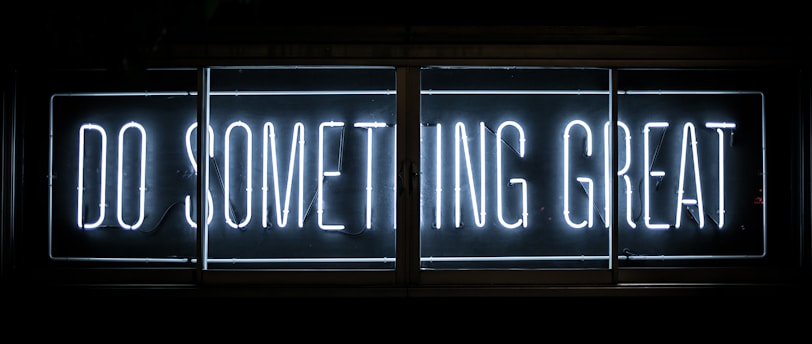"What is Newsletter? | Most especially why I'm going with the newsletter?"
In this article, I aim to provide a clear and concise overview of newsletters and their benefits. I discuss the purpose of newsletters, how they can be used to build relationships, establish trust and credibility, and increase engagement and conversions. I also touch upon the importance of finding a consistent frequency and choosing a format that aligns with the content and audience. Additionally, I share my personal motivation for starting a newsletter, which is to express my thoughts and share my learning experiences with others. Whether you are new to newsletters or looking to improve your existing one, this article has something for everyone.
Adil Murshid
2/14/20233 min read


Photo by Clark Tibbs on Unsplash
1. What is a Newsletter?
A newsletter is a form of communication that is typically used by businesses, organizations, and individuals to share information and updates with a targeted audience. The purpose of a newsletter is to build relationships with subscribers and keep them informed about news, events, products, and services. Newsletters can be delivered via email, snail mail, or posted online, and they often include text, images, and links to additional resources. They are typically delivered regularly, such as weekly, monthly, or quarterly, to ensure that subscribers stay up-to-date with the latest information. By providing valuable content and a convenient method of delivery, newsletters can help establish trust and credibility with subscribers, ultimately leading to increased engagement and conversions.
2. The Purpose of the Newsletter
The purpose of a newsletter is to provide regular, up-to-date information to its subscribers. It is an effective way to communicate with a target audience, build relationships, and establish a sense of community. A newsletter can share company news, product updates, industry trends, and personal insights. It provides a platform for businesses and individuals to showcase their expertise and build brand awareness. Newsletters can also be used to drive traffic to a website, promote products or services, and encourage engagement through calls to action. The goal of a newsletter is to keep subscribers informed and engaged, providing them with valuable content that is relevant to their interests. Whether for business or personal use, a well-crafted newsletter has the power to foster strong relationships and create a loyal following.
3. The Frequency of Newsletter
The typical frequency of newsletters can vary greatly, depending on the purpose of the newsletter and the target audience. Some newsletters are sent weekly, while others are sent monthly or even quarterly. The frequency of a newsletter is important because it helps to establish a consistent rhythm with subscribers and build trust. By sending newsletters at a consistent frequency, subscribers come to expect and look forward to receiving them. This helps to maintain their engagement and interest in the content.
Consistency is also important in terms of building a relationship with subscribers. When subscribers receive a newsletter regularly, they are more likely to engage with the content and form a relationship with the sender. This, in turn, helps to establish trust and credibility, which is essential for building a loyal subscriber base.
In short, the frequency of a newsletter is important because it helps to maintain engagement, build trust, and establish a consistent relationship with subscribers. It's important to find a frequency that works for audience and stick to it to ensure that newsletter remains relevant and valuable to them.
4. The Format of the Newsletter
Newsletters can take various forms, and the format can impact how content is delivered. Here are three common formats for newsletters:
Text-based: This format consists mainly of written text, and is usually easy to read and straightforward. It's a great choice for newsletters that are heavy on text and contain minimal images.
Image-rich: This format uses a lot of images and graphics to enhance the visual appeal of the newsletter. It's ideal for newsletters that cover topics like fashion, design, or travel, where pictures are key to communicating the message.
Multimedia: This format incorporates text, images, videos, and other forms of media into the newsletter. This format is ideal for newsletters that aim to create an immersive experience for the reader.
In conclusion, the format of the newsletter should align with the type of content you want to share, and the audience you want to reach. Consider the purpose of your newsletter and what message you want to convey, then choose the format that will help you deliver your content in the best possible way.
Most especially why I'm going with the newsletter?
The reasons are simple. I always wanted to write something and I like expressing my thoughts about the things I like, and as I've mentioned in my previous newsletter I'm more understanding of email systems and custom domains I come across in newsletters and I find that engaging.
So, in the future, I'll try to post those things that I've learned, and even if I think of learning something, I'll share it about what I've accomplished the whole week. I like reading books, and the last book I read was Ikigai and it was really enjoyable.
The song I've saved in my playlist this week.
Shauq | Album-Qala
Bones | Band-Imagine Dragons
The Anime I'm watching.
Blue Lock
Considering learning in the coming days.
Building website
Learn more about content writing
Email Marketing
Online Services can be use for newsletter
Thanks for reading adilm! Subscribe for free to receive new posts and support my work.
